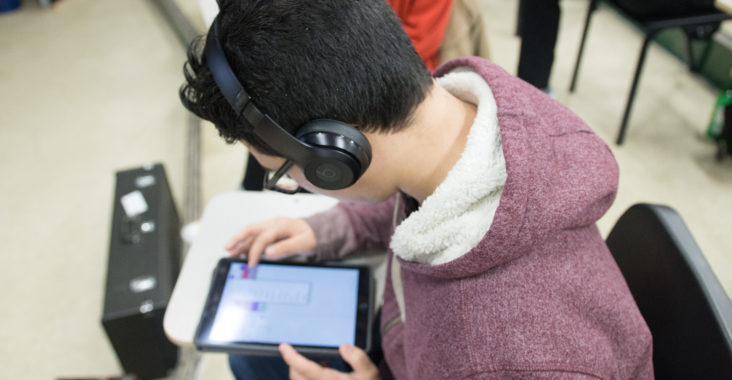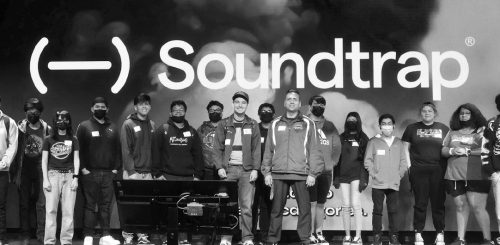
Multitrack Recording For Ear Training & Jazz
April 4, 2018Soundtrap is, without a doubt, one of the most brilliant tools that has come out for music education in a while. It is a very capable DAW, replacing Garageband as the mainstay in my music technology classroom. The collaborative nature of Soundtrap is really what makes it shine. It’s ability to pair groups of students together on projects is just the tip of the iceberg though. One unique way it can be used is by combining its multitrack recording ability with teacher-created content to create interactive ear training exercises.
Drum and Drone Ear Training
Earlier in the year, I started using a drone as an ear training tool. By focusing on how different intervals feel against the tone, students are able to hear intervals harmonically instead of melodically. In order to take this idea and have students work at their own pace and submit recordings for assessment, I needed to use Soundtrap in a different way. I started by creating a song with a drone and layered a drumbeat, guide tones of various patterns, and vocal instructions. To help the visual learners, I added animations to the audio and made it into a video. The videos have been tremendous in helping students match pitch and find intervals. I’ve found it works best when they are wearing headphones so they can feel when they are out of tune with the guide and/or the drone.
The next step was for students to be able to assess their ability to sing these intervals and send them to me. The drum track, drone, helper instrument, and vocal instructions were all mixed down to their own files and put on our website. Students or teachers can change the project tempo of a blank project, import the audio files and toggle which tracks are live or muted. Students can now share their project with me, demonstrating their ability to hear these intervals against the drone. Interval singing gets better with practice and students can date their projects to create an ear training journal, showing their progress over time. Here is the Drum and Drone page with individual files for download.
Etudes By Ear
The best way to get the sound of a particular style of music in your head is to listen to it so much that it becomes a part of you. Better yet, listen to an improvised solo until you can sing along with it perfectly. This is true for any kind of music, but especially with the complex harmonic nature of jazz. Our first test of using Soundtrap as a tool for learning jazz by ear was by importing the audio of a jazz solo into the studio. We shared the project with a student and had him sing along to the recorded solo as an assignment. He was able to set loop points and slow the recording down to get the solo in his head. He added a voice track and recorded himself singing along to the solo for a grade. It was easy to listen back to the recording and go between the student voice and the original by simply turning the volume of different tracks up and down. He was learning jazz language the way that the greats did, with a little help from 21st-century technology!
The only problem with this project was the student wasn’t able to mute the solo itself. I wrote a few jazz etudes for popular jazz standards and recorded backing tracks on Soundtrap. The solo etudes were then recorded on a separate track using either a guitar (me) or tenor sax (my teaching partner-in-crime, Paul Levy). Now the backing track and the solo can be isolated giving a student the chance to really see if they know the solo by recording themselves singing (or playing) it without the original etude recording.
I had a class of 20 learn a solo over rhythm changes in three days at their own pace. At the end of the project, students got into groups and wrote words to the solo…the more ridiculous the better! They recorded a music video of themselves singing it and submitted it through Google Classroom for everyone to view. After completing this project, students began improvising with more authentic style and language. They even began to connect what they were hearing in their heads to their instruments more efficiently and effectively. Here is our etude page for Have You Met Miss Jones.
All of the resources mentioned above are available for free on shedthemusic.com. More Etudes by Ear and Drum and Drone exercises are slated to be recorded this year. If you have any recommendations for exercises that you would like to see/hear/use, send us an email.
 EDU Portal
EDU Portal


